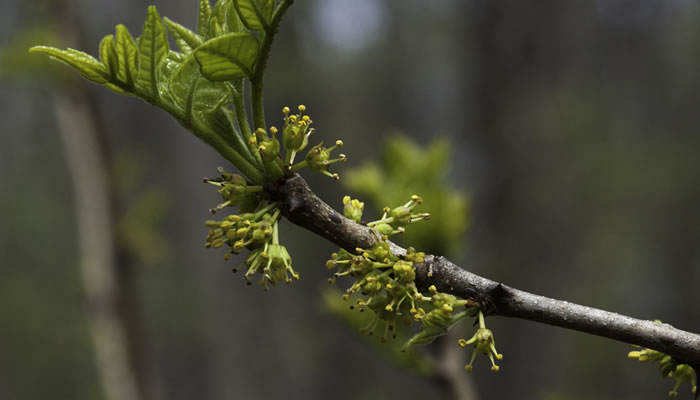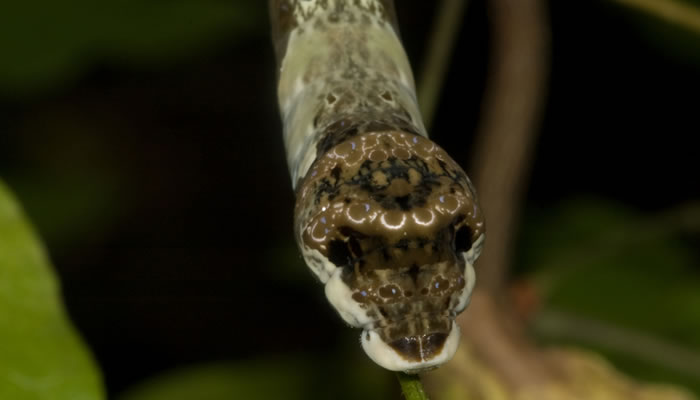Question: When is an ash not an ash? Answer: when it’s an orange.
Common name notwithstanding, one of our woodland shrubs—prickly ash, Zanthoxylum americanum—is not an ash. Rather it’s one of just two species in our local flora representing the orange family, Rutaceae.
A crushed leaf emits a tangy citrus-y smell. Prickly it is, as anyone who has tried to navigate through a Zanthoxylum thicket would agree. This species is dioecious—that is, its male and female flowers occur on different plants. Blooming in the woods now, the flowers are far from showy and are easily overlooked. A closer look identifies the male flowers by the exerted anthers and the females by the single pistil.

Prickly ash and our other citrus family species—wafer ash, Ptelea trifoliate—are the host plants for several butterflies, including the giant swallowtail, Papilio cresphontes. The adult swallowtail deposits its eggs on the leaves or twigs of the host plant. The caterpillar emerges and feeds on the leaves until it is ready to pupate and form a chrysalis, its overwintering form. The tiny caterpillar looks much like bird droppings on a leaf.
The mature caterpillar looks remarkably like the head of a snake!

The adult butterfly emerges in the spring, so look for adults of this impressive butterfly in the coming weeks.
By Jane Balaban, North Branch Restoration Project.

